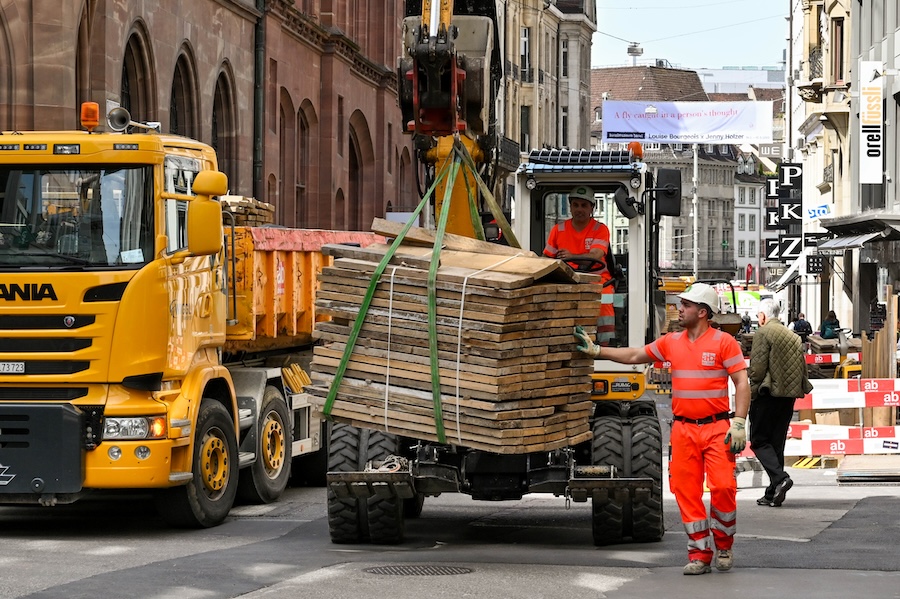
View the complete article here.
Urban construction projects and other confined environments present unique challenges for crane operators and contractors. With limited space to maneuver, strict regulations, and potential safety hazards, completing heavy lifting operations in these settings requires careful planning and innovative approaches. Here’s a comprehensive guide to strategies that can help ensure success when lifting in tight spaces.
Choose the Right Crane for the Job
Selecting the appropriate crane is critical in confined environments. The type of crane you use can significantly impact efficiency and safety.
- Compact and mobile cranes: These cranes, such as mini crawler cranes or spider cranes, are designed for tight spaces and can navigate narrow streets or small job sites with ease. They are ideal for urban projects with restricted access.
- Tower cranes with small footprints: When working in urban settings with limited ground space, a tower crane with a small base can provide the height and reach required without consuming valuable real estate.
- Telescopic cranes: These cranes offer flexibility with their adjustable booms, allowing them to perform precision lifting tasks in spaces where a fixed-length boom might be impractical.
Consider factors like load weight, reach requirements, and available space when choosing your equipment.
Conduct a Thorough Site Survey
Before any lifting operation, perform a detailed site survey to identify potential obstacles and challenges. This step helps you plan and adapt to the constraints of the environment.
- Identify obstructions: Look for overhead powerlines, neighboring buildings, and underground utilities that may interfere with crane operations.
- Evaluate ground conditions: Tight spaces often mean less flexibility for setting up stabilizers or outriggers. Ensure the ground can support the crane’s weight and use outrigger pads or mats to distribute loads.
- Access points and entry routes: Determine how cranes and other equipment will be brought onto the site, considering narrow streets, low-clearance bridges, and other urban obstacles.
Optimize Load Handling and Positioning
In confined spaces, careful load handling is essential to avoid collisions and ensure safety.
- Pre-plan load paths: Map out the entire lifting process, including the crane’s position, the load’s path, and where it will be placed. Account for any obstacles along the way.
- Use modular components: For larger equipment or materials, consider modular designs that can be assembled or disassembled on-site to simplify transport and lifting.
- Precise rigging techniques: Invest in high-quality rigging equipment, such as slings and spreader bars, to ensure the load is stable and balanced during lifts.
Leverage Advanced Technology
Modern technology can help overcome the challenges of working in tight spaces.
- 3D lift planning software: Use software to create detailed simulations of the lifting process, including crane positioning, load paths, and potential hazards. This allows you to visualize and adjust your plan before arriving on-site.
- Remote-controlled cranes: Remote-controlled cranes can improve safety and precision, especially when space constraints limit the operator’s visibility or access to the cab.
- Load-monitoring systems: Equip cranes with real-time load monitoring systems to ensure safe lifting practices, especially when operating near the crane’s capacity.
Prioritize Safety and Communication
Safety is paramount in any crane operation, but confined spaces add an extra layer of complexity.
- Clear communication protocols: Equip all personnel with radios or headsets to maintain constant communication. Use hand signals or other visual cues as a backup in noisy environments.
- Spotters and signalers: Assign spotters to monitor blind spots and signalers to guide the crane operator, ensuring the load moves safely through tight areas.
- Emergency procedures: Have a clear emergency response plan in place, including protocols for addressing equipment failures or load instability.

Work During Off-Peak Hours
In urban environments, scheduling lifting operations during off-peak hours can reduce disruptions and provide more flexibility.
- Night or weekend work: Performing lifts during quieter times can minimize interference from traffic and pedestrians, allowing for safer and more efficient operations.
- Coordination with local authorities: Obtain any necessary permits and coordinate with local officials to manage street closures, parking restrictions, or other temporary measures.
Use Specialized Lifting Accessories
Lifting accessories can make all the difference in tight spaces by enhancing the crane’s capabilities.
- Jibs and boom extensions: Attachments like jibs and extensions can increase reach and flexibility, allowing cranes to access hard-to-reach areas.
- Low-headroom rigging: Use rigging systems specifically designed for spaces with limited overhead clearance. These tools help lift loads without compromising safety or stability.
- Spreader bars: When lifting wide or heavy loads, spreader bars help distribute the weight evenly, reducing the risk of tipping or damage to the crane.
Plan for Public Safety
In urban settings, the safety of nearby pedestrians and property must also be considered.
- Create barriers: Use fencing, barricades, or cones to create a safe perimeter around the lifting area.
- Post warning signs: Clearly mark hazardous zones with signs to alert the public and workers.
- Inspect the surroundings: Regularly check for new hazards, such as parked vehicles or construction debris, that could compromise safety.
View the complete article here.
What type of crane is best for confined spaces?
Compact cranes like mini crawler cranes, spider cranes, and telescopic cranes are ideal for tight spaces due to their maneuverability.
How can crane operations be made safer in urban environments?
Safety can be improved by using spotters, clear communication protocols, load-monitoring systems, and working during off-peak hours.













































